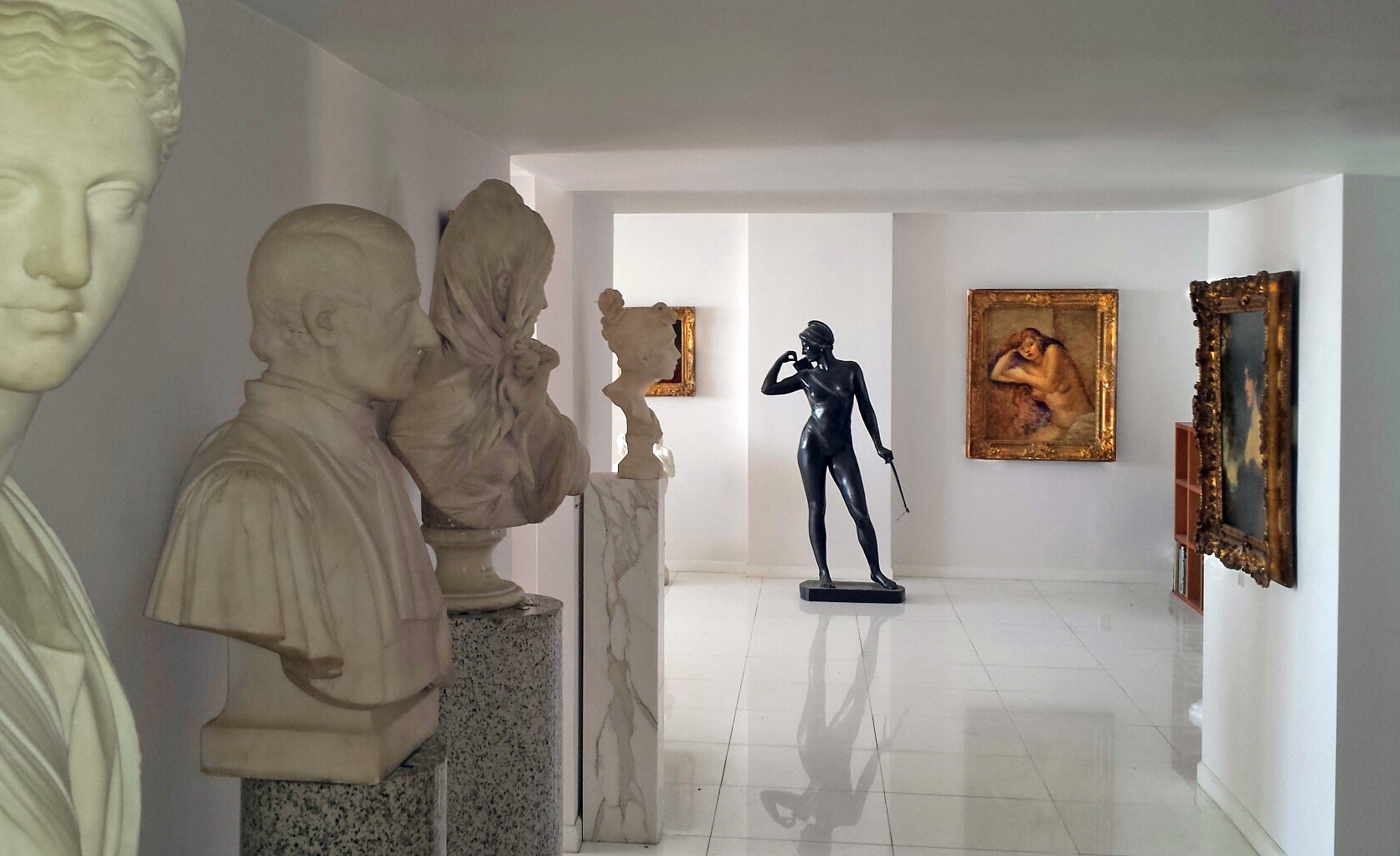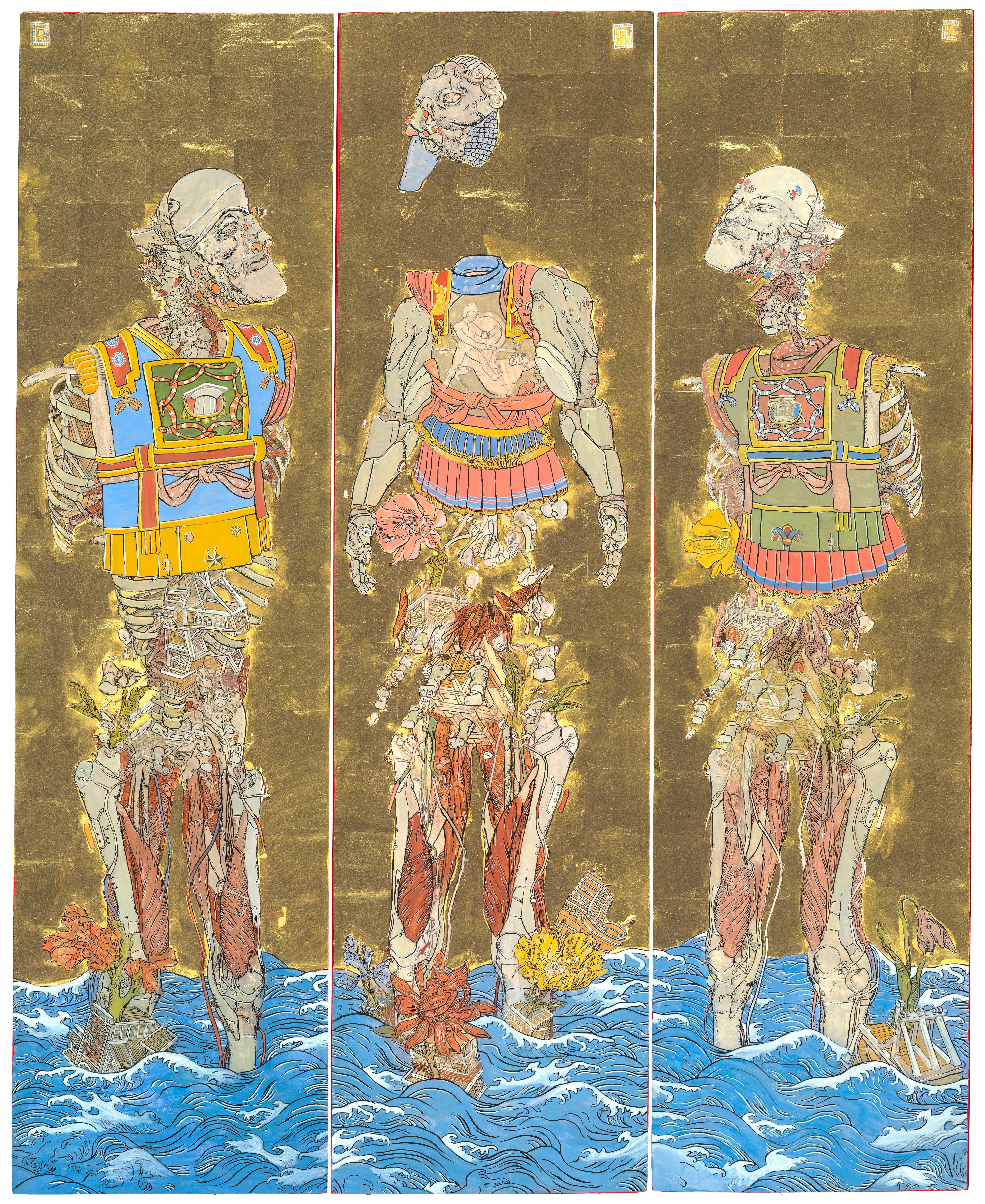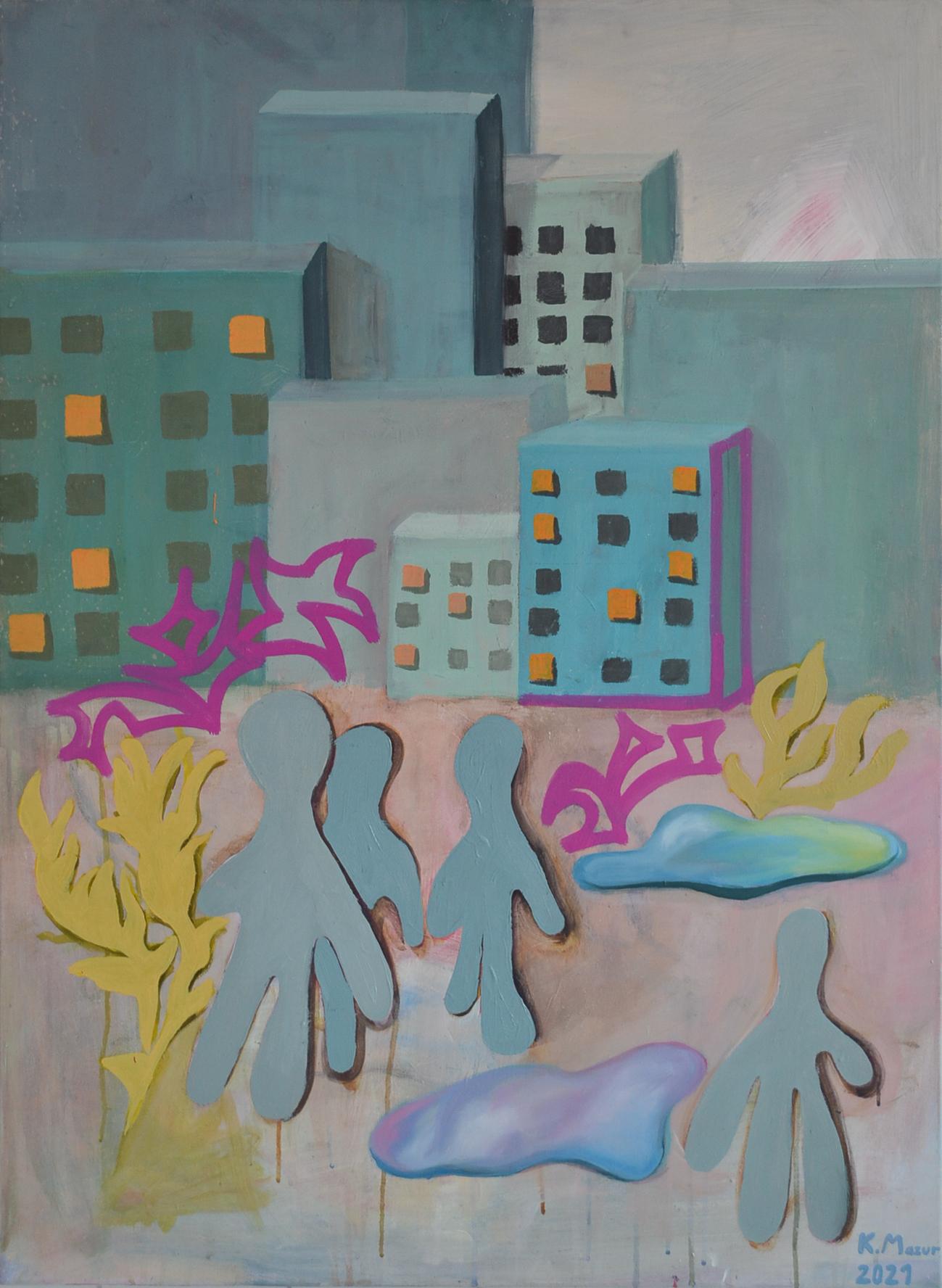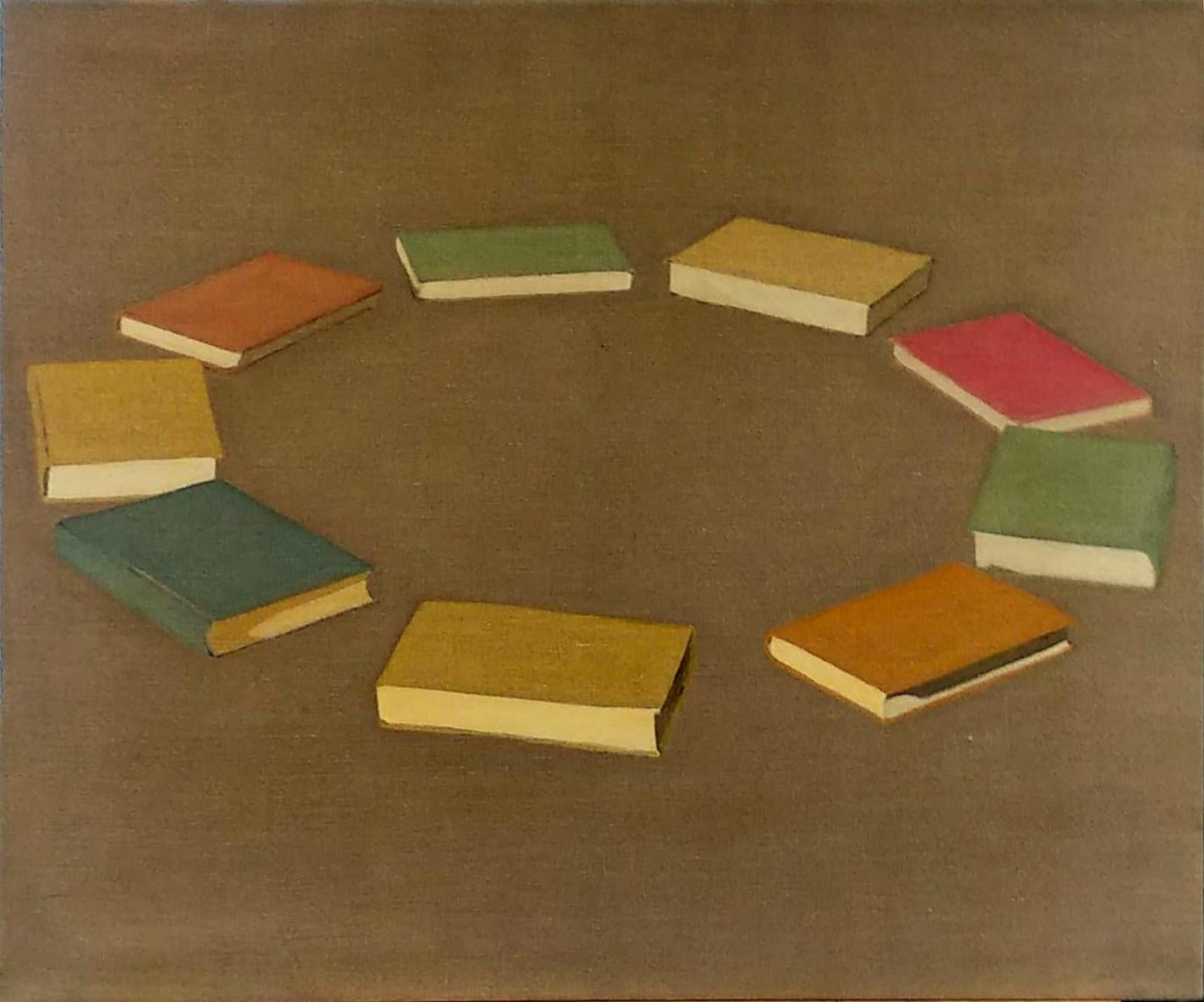Items Similar to Journey to the Center of the Earth Illustration
Want more images or videos?
Request additional images or videos from the seller
1 of 14
Gianni RennaJourney to the Center of the Earth Illustration 1963
1963
About the Item
20th Century Italian Illustrator Gianna Renna depicts a emotionally-charged scene of three men on a raft descending into a fiery abyss. His conception and execution of Jules Verne's classic story "Journey to the Center of the Earth" is brilliantly rendered and designed to show maximum drama. The real story in looking at the work 61 years after it was done is not about how the artist puts an author's words into a picture. The point of Gianna Renna's work is that it features high-level painting, drawing, composition, and design skills that are almost completely absent from all of the highly touted contemporary artists that are praised in today's art world. Unsigned, Unframed. Original illustration done by Renna for the novel "Journey to the Center of the Earth" by Jules Verne published in 1963. tempera on heavy illustration board
- Creator:Gianni Renna (Italian)
- Creation Year:1963
- Dimensions:Height: 7.4 in (18.8 cm)Width: 19.2 in (48.77 cm)Depth: 1 in (2.54 cm)
- Medium:
- Movement & Style:
- Period:
- Condition:
- Gallery Location:Miami, FL
- Reference Number:1stDibs: LU385313672882

About the Seller
4.9
Platinum Seller
These expertly vetted sellers are 1stDibs' most experienced sellers and are rated highest by our customers.
Established in 2005
1stDibs seller since 2016
102 sales on 1stDibs
Typical response time: 1 hour
- ShippingRetrieving quote...Ships From: Miami, FL
- Return PolicyA return for this item may be initiated within 3 days of delivery.
More From This SellerView All
- Love Story, Illustration for the Saturday Evening PostBy Bruce BombergerLocated in Miami, FLAn illustrator for Time, Life, Look, True, True West, Saturday Evening Post, Good Housekeeping, Readers Digest, and others, he also painted for adverti...Category
1950s American Realist Figurative Paintings
MaterialsGouache
- Pregame Football Players Lined Up Abstraction of Blue Jersey and Orange NumbersBy Bob PeakLocated in Miami, FLIt's 1964, and the brilliantly inventive artist/illustrator Bob Peak is turning the world of commercial art upside down. In "Pregame Football Players" for Sports Illustrated, Peak pu...Category
1960s Figurative Paintings
MaterialsGouache, Pencil
- Football Team Sports Action Painting Abstract Expressionism, Sports IllustratedBy Bob PeakLocated in Miami, FLFootball plays cloaked in oversized Browns jackets are seen from behind running off the field. Always the graphic innovator, legendary illustrator Bob Peak creates a radical composition by leaving the bottom two-thirds of the picture plane empty of detail. To convey a sense of motion, Peak uses broad strokes of paint similar to the action painters Franz Kline and Willem de Kooning, who were the dominant force in the fine art world in the 1960s. Clearly, one can see a cross-over influence from Fine Art to commercial illustration as Peak strikes a balance between abstract versus figurative art. This work was done on an assignment for Sports Illustrated...Category
1960s Abstract Expressionist Figurative Paintings
MaterialsCharcoal, Acrylic
- JudgmentBy Philip CastleLocated in Miami, FLThin edged metal frame Philip Castle is an Irish Painter and husband to artist Barry Castle He is rarely exhibited and Prince Rainier of Monaco once purc...Category
1960s Modern Figurative Paintings
MaterialsAcrylic
- Golfer Swinging, Vintage 7 Up Ad "Get Real Action" in Green and Yellow - GolfBy Bob PeakLocated in Miami, FLThis strobe-like dynamic composition with bright and bold colors reflects the energetic taste of the 7 Up brand. It lies somewhere between abstraction and figuration. Peaks' use of b...Category
1960s American Modern Figurative Paintings
MaterialsAcrylic, Illustration Board
- Racing Cars in Bright Red, Sports Illustrated Illustration - Sports Car - PinkBy Bob PeakLocated in Miami, FLPunchy reds and zestful hot pinks convey a sense of intense motion and engine heat. The art is as much as color-field painting as a narrative work. It was a commissioned illustration for Sports Illustrated...Category
1970s Color-Field Figurative Paintings
MaterialsLaid Paper, Canvas, Acrylic
You May Also Like
- The Three Emperors, Futuristic painting triptych as a Byōbu-ē folding screenBy Konstantinos PapamichalopoulosLocated in Dallas, TXThe Three Emperors is a triptych, which Papamichalopoulos has created a Byōbu-ē folding screen. Each panel measures 150x40 cm / 59 x 16 inches. The piece is created using ink, egg-...Category
2010s Contemporary Figurative Paintings
MaterialsGold Leaf
- What You All Want ??? - Contemporary Figurative Painting, Polish Young ArtLocated in Salzburg, ATKasia Mazur is a very young artist, she is still studying painting at the Academy of Fine Arts in Gdansk, where she also lives. She has already had exhibit...Category
2010s Contemporary Figurative Paintings
MaterialsCotton Canvas, Oil, Acrylic, Tempera
- Hanan Shlonsky, Circle of Literature, 2007 tempera on linen, 82x100 cmLocated in Jerusalem, ILHanan Shlonsky Circle of Literature, 2007 tempera on linen 82x100 cm Exhibited: Comparative Literature, 2009 Artists' House Tel-Aviv , paintings on l...Category
2010s Minimalist Figurative Paintings
MaterialsTempera, Linen
- Ceremonial Dancers oil and tempera painting by Julio De DiegoBy Julio de DiegoLocated in Hudson, NYArtwork measures 48" x 30" and framed 56 ¼" x 38 ¼" x 3" Provenance: John Heller Gallery, NYC, circa 1975 (label verso) The artist's daughter Corbino Galleries, Sarasota, FL (1990)...Category
1940s Modern Abstract Paintings
MaterialsMasonite, Oil, Tempera
- The Magician oil and tempera painting by Julio de DiegoBy Julio de DiegoLocated in Hudson, NYJulio De Diego’s Atomic Series paintings made an extraordinary statement regarding the shock and fear that accompanied the dawn of the nuclear age. In the artist’s own words, “Scientists were working secretly to develop formidable powers taken from the mysterious depths of the earth - with the power to make the earth useless! Then, the EXPLOSION! . . . we entered the Atomic Age, and from there the neo-Atomic war begins. Explosions fell everywhere and man kept on fighting, discovering he could fight without flesh.” To execute these works, De Diego developed a technique of using tempera underpainting before applying layer upon layer of pigmented oil glazes. The result is paintings with surfaces which were described as “bonelike” in quality. The forms seem to float freely, creating a three-dimensional visual effect. In the 1954 book The Modern Renaissance in American Art, author Ralph Pearson summarizes the series as “a fantastic interpretation of a weighty theme. Perhaps it is well to let fantasy and irony appear to lighten the devastating impact. By inverse action, they may in fact increase its weight.” Exhibited 1964 Marion Koogler McNay Art Institute, San Antonio, Texas This work retains its original frame which measures 54" x 42" x 2" About this artist: Julio De Diego crafted a formidable persona within the artistic developments and political struggles of his time. The artist characterized his own work as “lyrical,” explaining, “through the years, the surrealists, the social-conscious painters and the others tried to adopt me, but I went my own way, good, bad or indifferent.” [1] His independence manifested early in life when de Diego left his parent’s home in Madrid, Spain, in adolescence following his father’s attempts to curtail his artistic aspirations. At the age of fifteen he held his first exhibition, set up within a gambling casino. He managed to acquire an apprenticeship in a studio producing scenery for Madrid’s operas, but moved from behind the curtains to the stage, trying his hand at acting and performing as an extra in the Ballet Russes’ Petrouchka with Nijinsky. He spent several years in the Spanish army, including a six-month stretch in the Rif War of 1920 in Northern Africa. His artistic career pushed ahead as he set off for Paris and became familiar with modernism’s forays into abstraction, surrealism, and cubism. The artist arrived in the U.S. in 1924 and settled in Chicago two years later. He established himself with a commission for the decoration of two chapels in St. Gregory’s Church. He also worked in fashion illustration, designed magazine covers and developed a popular laundry bag for the Hotel Sherman. De Diego began exhibiting through the Art Institute of Chicago in 1929, and participated in the annual Chicago Artists Exhibitions, Annual American Exhibitions, and International Water Color Exhibitions. He held a solo exhibition at the Art Institute of Chicago in the summer of 1935. Though the artist’s career was advancing, his family life had deteriorated. In 1932 his first marriage dissolved, and the couple’s young daughter Kiriki was sent to live with friend Paul Hoffman. De Diego continued to develop his artistic vocabulary with a growing interest in Mexican art. He traveled throughout the country acquainting himself with the works of muralists such as Carlos Merida, and also began a collection of small native artifacts...Category
1940s American Modern Abstract Paintings
MaterialsMasonite, Oil, Tempera
- St. Atomic oil and tempera painting by Julio de DiegoBy Julio de DiegoLocated in Hudson, NYJulio De Diego’s Atomic Series paintings made an extraordinary statement regarding the shock and fear that accompanied the dawn of the nuclear age. In the artist’s own words, “Scientists were working secretly to develop formidable powers taken from the mysterious depths of the earth - with the power to make the earth useless! Then, the EXPLOSION! . . . we entered the Atomic Age, and from there the neo-Atomic war begins. Explosions fell everywhere and man kept on fighting, discovering he could fight without flesh.” To execute these works, De Diego developed a technique of using tempera underpainting before applying layer upon layer of pigmented oil glazes. The result is paintings with surfaces which were described as “bonelike” in quality. The forms seem to float freely, creating a three-dimensional visual effect. In the 1954 book The Modern Renaissance in American Art, author Ralph Pearson summarizes the series as “a fantastic interpretation of a weighty theme. Perhaps it is well to let fantasy and irony appear to lighten the devastating impact. By inverse action, they may in fact increase its weight.” Exhibited 1950 University of Illinois at Urbana "Contemporary American Painting" 1964 Marion Koogler McNay Art Institute, San Antonio, Texas This work retains its original frame which measures 54" x 36" x 2". About this artist: Julio De Diego crafted a formidable persona within the artistic developments and political struggles of his time. The artist characterized his own work as “lyrical,” explaining, “through the years, the surrealists, the social-conscious painters and the others tried to adopt me, but I went my own way, good, bad or indifferent.” [1] His independence manifested early in life when de Diego left his parent’s home in Madrid, Spain, in adolescence following his father’s attempts to curtail his artistic aspirations. At the age of fifteen he held his first exhibition, set up within a gambling casino. He managed to acquire an apprenticeship in a studio producing scenery for Madrid’s operas, but moved from behind the curtains to the stage, trying his hand at acting and performing as an extra in the Ballet Russes’ Petrouchka with Nijinsky. He spent several years in the Spanish army, including a six-month stretch in the Rif War of 1920 in Northern Africa. His artistic career pushed ahead as he set off for Paris and became familiar with modernism’s forays into abstraction, surrealism, and cubism. The artist arrived in the U.S. in 1924 and settled in Chicago two years later. He established himself with a commission for the decoration of two chapels in St. Gregory’s Church. He also worked in fashion illustration, designed magazine covers and developed a popular laundry bag for the Hotel Sherman. De Diego began exhibiting through the Art Institute of Chicago in 1929, and participated in the annual Chicago Artists Exhibitions, Annual American Exhibitions, and International Water Color Exhibitions. He held a solo exhibition at the Art Institute of Chicago in the summer of 1935. Though the artist’s career was advancing, his family life had deteriorated. In 1932 his first marriage dissolved, and the couple’s young daughter Kiriki was sent to live with friend Paul Hoffman. De Diego continued to develop his artistic vocabulary with a growing interest in Mexican art. He traveled throughout the country acquainting himself with the works of muralists such as Carlos Merida, and also began a collection of small native artifacts...Category
1940s American Modern Abstract Paintings
MaterialsMasonite, Oil, Tempera





